HP Spectre x360 Convertible 14-ea0081ng operation manual

User Guide
SUMMARY
This guide provides information about components, network connection, power management, security, backing up, and more.
© Copyright 2020 HP Development Company,
L.P.
Bluetooth is a trademark owned by its proprietor and used by HP Inc. under license. Intel, Celeron, Pentium, and Thunderbolt are trademarks of Intel Corporation or its subsidiaries in the U.S. and/or other countries. Windows is either a registered trademark or trademark of Microsoft Corporation in the United States and/or other countries. The microSD logo and microSD are trademarks of SD-3C LLC. USB Type-C® and USB-C® are registered trademarks of USB Implementers Forum. DisplayPort™ and the DisplayPort™ logo are trademarks owned by the Video Electronics Standards Association (VESA) in the United States and other countries. Miracast® is a registered trademark of Wi-Fi Alliance.
The information contained herein is subject to change without notice. The only warranties for HP products and services are set forth in the express warranty statements accompanying such products and services. Nothing herein should be construed as constituting an additional warranty. HP shall not be liable for technical or editorial errors or omissions contained herein.
First Edition: October 2020
Document Part Number: M19507-001
Product notice
This guide describes features that are common to most products. Some features might not be available on your computer.
Not all features are available in all editions or versions of Windows. Systems might require upgraded and/or separately purchased hardware, drivers, software or BIOS update to take full advantage of Windows functionality. Windows 10 is automatically updated, which is always enabled. ISP fees might apply and additional requirements might apply over time for updates. Go to http://www.microsoft.com for details.
To access the latest user guides, go to http://www.hp.com/support, and follow the instructions to find your product. Then select
Manuals.
Software terms
By installing, copying, downloading, or otherwise using any software product preinstalled on this computer, you agree to be bound by the terms of the HP End User License Agreement (EULA). If you do not accept these license terms, your sole remedy is to return the entire unused product (hardware and software) within 14 days for a full refund subject to the refund policy of your seller.
For any further information or to request a full refund of the price of the computer, please contact your seller.

Safety warning notice
Reduce the possibility of heat-related injuries or of overheating the computer by following the practices described.
 WARNING! To reduce the possibility of heat-related injuries or of overheating the computer, do not place the computer directly on your lap or obstruct the computer air vents. Use the computer only on a hard, at surface. Do not allow another hard surface, such as an adjoining optional printer, or a soft surface, such as pillows or rugs or clothing, to block air ow. Also, do not allow the AC adapter to come into contact with the skin or a soft surface, such as pillows or rugs or clothing, during operation. The computer and the AC adapter comply with the user-accessible surface temperature limits defined by applicable safety standards.
WARNING! To reduce the possibility of heat-related injuries or of overheating the computer, do not place the computer directly on your lap or obstruct the computer air vents. Use the computer only on a hard, at surface. Do not allow another hard surface, such as an adjoining optional printer, or a soft surface, such as pillows or rugs or clothing, to block air ow. Also, do not allow the AC adapter to come into contact with the skin or a soft surface, such as pillows or rugs or clothing, during operation. The computer and the AC adapter comply with the user-accessible surface temperature limits defined by applicable safety standards.
iii
iv Safety warning notice

Processor configur tion setting (select products only)
Important information about processor configurations.
 IMPORTANT: Select products are configured with an Intel® Pentium® N35xx/N37xx series or a Celeron® N28xx/N29xx/N30xx/N31xx series processor and a Windows® operating system. If your computer is configured as described, do not change the processor configur tion setting in msconfig.exe from 4 or 2 processors to 1 processor. If you do so, your computer will not restart. You will have to perform a factory reset to restore the original settings.
IMPORTANT: Select products are configured with an Intel® Pentium® N35xx/N37xx series or a Celeron® N28xx/N29xx/N30xx/N31xx series processor and a Windows® operating system. If your computer is configured as described, do not change the processor configur tion setting in msconfig.exe from 4 or 2 processors to 1 processor. If you do so, your computer will not restart. You will have to perform a factory reset to restore the original settings.
v
vi Processor configuration setting (select products only)

Table of contents
1 Getting started ............................................................................................................................................. |
1 |
Best practices ......................................................................................................................................................... |
1 |
More HP resources ................................................................................................................................................. |
1 |
2 Getting to know your computer ...................................................................................................................... |
3 |
Locating hardware ................................................................................................................................................. |
3 |
Locating software .................................................................................................................................................. |
3 |
Right side ............................................................................................................................................................... |
3 |
Left side ................................................................................................................................................................. |
4 |
Display .................................................................................................................................................................... |
5 |
Low blue light mode (select products only) ........................................................................................ |
5 |
Keyboard area ........................................................................................................................................................ |
7 |
Touchpad settings and components ................................................................................................... |
7 |
Touchpad settings ............................................................................................................. |
7 |
Adjusting touchpad settings .......................................................................... |
7 |
Turning on the touchpad ................................................................................ |
7 |
Touchpad components ...................................................................................................... |
7 |
Lights ................................................................................................................................................... |
8 |
Button, speakers, and fingerprint reader ........................................................................................... |
9 |
Special keys ....................................................................................................................................... |
10 |
Action keys ........................................................................................................................................ |
11 |
Bottom ................................................................................................................................................................. |
13 |
Labels ................................................................................................................................................................... |
13 |
Using a SIM card (select products only) ............................................................................................................... |
15 |
Determining the correct SIM card size for your computer ................................................................ |
15 |
Inserting a nano SIM card .................................................................................................................. |
15 |
3 Connecting to a network .............................................................................................................................. |
16 |
Connecting to a wireless network ....................................................................................................................... |
16 |
Using the wireless controls ............................................................................................................... |
16 |
Airplane mode key .......................................................................................................... |
16 |
Operating system controls ............................................................................................. |
16 |
Connecting to a WLAN ....................................................................................................................... |
17 |
Using HP Mobile Broadband (select products only) .......................................................................... |
17 |
Using eSIM (select products only) ..................................................................................................... |
18 |
Using GPS (select products only) ...................................................................................................... |
18 |
vii
Using Bluetooth wireless devices (select products only) ................................................................. |
18 |
Connecting Bluetooth devices ........................................................................................ |
18 |
Connecting to a wired network—LAN (select products only) ............................................................................. |
19 |
4 Enjoying entertainment features .................................................................................................................. |
20 |
Using the camera ................................................................................................................................................. |
20 |
Using audio .......................................................................................................................................................... |
20 |
Connecting speakers ......................................................................................................................... |
20 |
Connecting headphones .................................................................................................................... |
20 |
Connecting headsets ......................................................................................................................... |
21 |
Using sound settings ......................................................................................................................... |
21 |
Sound settings ................................................................................................................ |
21 |
Audio settings ................................................................................................................. |
21 |
Using video .......................................................................................................................................................... |
21 |
Connecting a Thunderbolt device using a USB Type-C cable (select products only) ....................... |
21 |
Discovering and connecting to Miracast-compatible wireless displays (select products only) ...... |
22 |
Using data transfer .............................................................................................................................................. |
22 |
Connecting devices to a USB Type-C port (select products only) ..................................................... |
23 |
5 Navigating the screen .................................................................................................................................. |
24 |
Using touchpad and touch screen gestures ........................................................................................................ |
24 |
Tap ..................................................................................................................................................... |
24 |
Two-finger pinch zoom ..................................................................................................................... |
24 |
Two-finger slide (touchpad and precision touchpad) ....................................................................... |
25 |
Two-finger tap (touchpad and precision touchpad) ......................................................................... |
25 |
Three-finger tap (touchpad and precision touchpad) ...................................................................... |
25 |
our-finger tap (touchpad and precision touchpad) ........................................................................ |
26 |
Three-finger swipe (touchpad and precision touchpad) .................................................................. |
26 |
our-finger swipe (precision touchpad) ............................................................................................ |
26 |
One-finger slide (touch screen) ......................................................................................................... |
27 |
Using an optional keyboard or mouse ................................................................................................................. |
27 |
Using an on-screen keyboard (select products only) .......................................................................................... |
27 |
6 Managing power .......................................................................................................................................... |
28 |
Using Sleep and Hibernation ............................................................................................................................... |
28 |
Initiating and exiting Sleep ............................................................................................................... |
28 |
Initiating and exiting Hibernation (select products only) ................................................................. |
29 |
Shutting down (turning off) the computer .......................................................................................................... |
29 |
Using the Power icon and Power Options ............................................................................................................ |
30 |
Running on battery power ................................................................................................................................... |
30 |
viii
Using HP Fast Charge (select products only) .................................................................................... |
30 |
Displaying battery charge ................................................................................................................. |
30 |
Finding battery information in HP Support Assistant (select products only) .................................. |
30 |
Conserving battery power ................................................................................................................. |
31 |
Identifying low battery levels ........................................................................................................... |
31 |
Resolving a low battery level ............................................................................................................ |
31 |
Resolving a low battery level when external power is available ................................... |
31 |
Resolving a low battery level when no power source is available ................................. |
32 |
Resolving a low battery level when the computer cannot exit Hibernation .................. |
32 |
Factory-sealed battery ...................................................................................................................... |
32 |
Running on external power ................................................................................................................................. |
32 |
7 Maintaining your computer .......................................................................................................................... |
34 |
Improving performance ....................................................................................................................................... |
34 |
Using Disk Defragmenter .................................................................................................................. |
34 |
Using Disk Cleanup ............................................................................................................................ |
34 |
Using HP 3D DriveGuard (select products only) ................................................................................ |
34 |
Identifying HP 3D DriveGuard status .............................................................................. |
35 |
Updating programs and drivers .......................................................................................................................... |
35 |
Updating programs and drivers using Windows 10 .......................................................................... |
35 |
Updating programs using Windows 10 S .......................................................................................... |
35 |
Updating drivers using Windows 10 S .............................................................................................. |
35 |
Cleaning your computer ...................................................................................................................................... |
36 |
Enabling HP Easy Clean (select products only) ................................................................................. |
36 |
Removing dirt and debris from your computer ................................................................................ |
36 |
Cleaning your computer with a disinfectant ..................................................................................... |
37 |
Caring for wood veneer (select products only) ................................................................................. |
37 |
Traveling with or shipping your computer .......................................................................................................... |
38 |
8 Securing your computer and information ....................................................................................................... |
39 |
Using passwords .................................................................................................................................................. |
39 |
Setting Windows passwords ............................................................................................................. |
39 |
Setting Setup Utility (BIOS) passwords ............................................................................................. |
40 |
Using Windows Hello (select products only) ....................................................................................................... |
40 |
Using internet security software ......................................................................................................................... |
41 |
Using antivirus software ................................................................................................................... |
41 |
Using firewall software ..................................................................................................................... |
41 |
Installing software updates ................................................................................................................................. |
41 |
Using HP Device as a Service (select products only) ........................................................................................... |
42 |
Securing your wireless network .......................................................................................................................... |
42 |
Backing up your software applications and information .................................................................................... |
42 |
ix
Using an optional security cable (select products only) ..................................................................................... |
42 |
9 Using Setup Utility (BIOS) ............................................................................................................................. |
43 |
Starting Setup Utility (BIOS) ................................................................................................................................ |
43 |
Updating Setup Utility (BIOS) .............................................................................................................................. |
43 |
Determining the BIOS version ........................................................................................................... |
43 |
Preparing for a BIOS update .............................................................................................................. |
44 |
Downloading a BIOS update ........................................................................................... |
44 |
Installing a BIOS update .................................................................................................. |
44 |
10 Using HP PC Hardware Diagnostics .............................................................................................................. |
46 |
Using HP PC Hardware Diagnostics Windows (select products only) ................................................................. |
46 |
Using an HP PC Hardware Diagnostics Windows hardware failure ID code ...................................... |
46 |
Accessing HP PC Hardware Diagnostics Windows ............................................................................ |
46 |
Accessing HP PC Hardware Diagnostics Windows from HP Help and Support .............. |
46 |
Accessing HP PC Hardware Diagnostics Windows from Support Assistant ................... |
47 |
Downloading HP PC Hardware Diagnostics Windows ....................................................................... |
47 |
Downloading the latest HP PC Hardware Diagnostics Windows version from HP ......... |
47 |
Downloading the HP PC Hardware Diagnostics Windows from the Microsoft Store ..... |
47 |
Downloading HP Hardware Diagnostics Windows by product name or number |
|
(select products only) ..................................................................................................... |
47 |
Installing HP PC Hardware Diagnostics Windows ............................................................................. |
48 |
Using HP PC Hardware Diagnostics UEFI ............................................................................................................. |
48 |
Using an HP PC Hardware Diagnostics UEFI hardware failure ID code ............................................. |
48 |
Starting HP PC Hardware Diagnostics UEFI ....................................................................................... |
48 |
Downloading HP PC Hardware Diagnostics UEFI to a USB ash drive .............................................. |
49 |
Downloading the latest HP PC Hardware Diagnostics UEFI version .............................. |
49 |
Downloading HP PC Hardware Diagnostics UEFI by product name or number |
|
(select products only) ..................................................................................................... |
49 |
Using Remote HP PC Hardware Diagnostics UEFI settings (select products only) ............................................. |
49 |
Downloading Remote HP PC Hardware Diagnostics UEFI ................................................................. |
50 |
Downloading the latest Remote HP PC Hardware Diagnostics UEFI version ................. |
50 |
Downloading Remote HP PC Hardware Diagnostics UEFI by product name or |
|
number ............................................................................................................................ |
50 |
Customizing Remote HP PC Hardware Diagnostics UEFI settings .................................................... |
50 |
11 Backing up, restoring, and recovering .......................................................................................................... |
51 |
Backing up information and creating recovery media ........................................................................................ |
51 |
Using Windows tools for backing up ................................................................................................. |
51 |
Using the HP Cloud Recovery Download Tool to create recovery media (select products only) ..... |
51 |
Restoring and recovering your system ............................................................................................................... |
51 |
x
Creating a system restore ................................................................................................................. |
52 |
Restoring and recovery methods ...................................................................................................... |
52 |
Recovering using HP Recovery media ............................................................................................... |
52 |
Changing the computer boot order ................................................................................................... |
52 |
Using HP Sure Recover (select products only) .................................................................................. |
53 |
12 Electrostatic discharge ............................................................................................................................... |
54 |
13 Specific tions ............................................................................................................................................ |
55 |
Input power .......................................................................................................................................................... |
55 |
Operating environment ....................................................................................................................................... |
56 |
14 Accessibility .............................................................................................................................................. |
57 |
HP and accessibility ............................................................................................................................................. |
57 |
Finding the technology tools you need ............................................................................................ |
57 |
The HP commitment ......................................................................................................................... |
57 |
International Association of Accessibility Professionals (IAAP) ....................................................... |
58 |
Finding the best assistive technology .............................................................................................. |
58 |
Assessing your needs ..................................................................................................... |
58 |
Accessibility for HP products .......................................................................................... |
58 |
Standards and legislation .................................................................................................................................... |
59 |
Standards .......................................................................................................................................... |
59 |
Mandate 376 – EN 301 549 ............................................................................................ |
59 |
Web Content Accessibility Guidelines (WCAG) ................................................................ |
59 |
Legislation and regulations .............................................................................................................. |
60 |
Useful accessibility resources and links .............................................................................................................. |
60 |
Organizations .................................................................................................................................... |
60 |
Educational institutions .................................................................................................................... |
60 |
Other disability resources ................................................................................................................. |
61 |
HP links .............................................................................................................................................. |
61 |
Contacting support .............................................................................................................................................. |
61 |
Index ............................................................................................................................................................. |
62 |
xi
xii

1Getting started
This computer is a powerful tool designed to enhance your work and entertainment.
Read this chapter to learn about best practices after you set up your computer, fun things to do with your computer, and where to find additional HP resources.
Best practices
After you set up and register the computer, we recommend the following steps to get the most out of your smart investment:
●Back up your hard drive by creating recovery media. See Backing up, restoring, and recovering on page 51.
●If you haven’t already done so, connect to a wired or wireless network. See details in Connecting to a network on page 16.
●Become familiar with the computer hardware and software. For more information, see Getting to know your computer on page 3 and Enjoying entertainment features on page 20.
●Update or purchase antivirus software. See Using antivirus software on page 41.
●Access HP Support Assistant app—For quick online support, open the HP Support Assistant app (select products only). HP Support Assistant optimizes computer performance and resolves problems using the latest software updates, diagnostic tools, and guided assistance. Type support in the taskbar search box, and then select HP Support Assistant. Then select Support.
More HP resources
To locate resources that provide product details, how-to information, and more, use this table.
Table 1-1 Additional information
Resource |
Contents |
||
|
|
|
|
Setup Instructions |
● |
Overview of computer setup and features |
|
|
|
|
|
HP support |
● |
Online chat with an HP technician |
|
For HP support, go to http://www.hp.com/support, and |
● |
Support telephone numbers |
|
follow the instructions to find your product. |
● |
Replacement parts videos (select products only) |
|
‒ or – |
|||
● |
Maintenance and service guides |
||
Type support in the taskbar search box, and then select |
|||
● |
HP service center locations |
||
HP Support Assistant. Then select Support. |
|||
|
|
||
‒ or – |
|
|
|
Select the question mark icon in the taskbar search box. |
|
|
|
Then select Support. |
|
|
|
|
|
|
|
Safety & Comfort Guide |
● |
Proper workstation setup |
|
To access this guide: |
● |
Guidelines for posture and work habits that increase your comfort |
|
|
and decrease your risk of injury |
||
|
|
||
1

Table 1-1 Additional information (continued)
Resource |
Contents |
|
|
▲ Type HP Documentation in the taskbar search |
● Electrical and mechanical safety information |
box, and then select HP Documentation. |
|
‒ or – |
|
▲Go to http://www.hp.com/ergo.
IMPORTANT: You must be connected to the internet to access the latest version of the user guide.
Regulatory, Safety, and Environmental Notices |
● |
Important regulatory notices, including information about proper |
|
|
battery disposal, if needed. |
To access this document: |
|
|
▲Type HP Documentation in the taskbar search box, and then select HP Documentation.
Limited Warranty* |
● |
Specific warranty information about this computer |
To access this document:
▲Type HP Documentation in the taskbar search box, and then select HP Documentation.
‒ or –
▲Go to http://www.hp.com/go/orderdocuments.
IMPORTANT: You must be connected to the internet to access the latest version of the user guide.
*You can find your HP Limited Warranty located with the user guides on your product and/or on the CD or DVD provided in the box. In some countries or regions, HP might provide a printed warranty in the box. For countries or regions where the warranty is not provided in printed format, you can request a copy from http://www.hp.com/go/orderdocuments. For products purchased in Asia Pacific, you can write to HP at POD, PO Box 161, Kitchener Road Post Office, Singapore 912006. Include your product name, and your name, phone number, and postal address.
2Chapter 1 Getting started
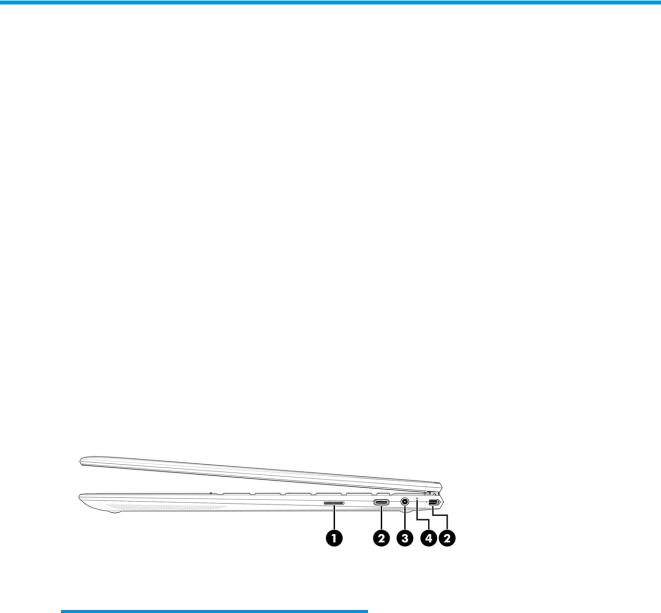
2Getting to know your computer
Your computer features top-rated components. This chapter provides details about your components, where they are located, and how they work.
Locating hardware
To find out what hardware is installed on your computer, type device manager in the taskbar search box, and then select the Device Manager app.
For information about system hardware components and the system BIOS version number, press fn+esc (select products only).
Locating software
To find out what software is installed on your computer, right-click the Start button, and then select Apps and Features.
Right side
Identify the components on the right side of the computer.
Table 2-1 Right-side components and their descriptions
Component |
|
Description |
|
|
|
|
|
(1) |
microSD™ memory card reader |
Reads optional memory cards that enable you to store, manage, |
|
|
|
share, or access information. |
|
|
|
To insert a card: |
|
|
|
1. |
Hold the card label-side up, with connectors facing the |
|
|
|
computer. |
|
|
2. |
Insert the card into the memory card reader, and then |
|
|
|
press in on the card until it is firmly seated. |
|
|
To remove a card: |
|
|
|
▲ |
Press in on the card, and then remove it from the memory |
|
|
|
card reader. |
|
|
|
|
3

Table 2-1 Right-side components and their descriptions (continued)
Component |
|
Description |
|
|
|
|
|
(2) |
USB Type-C power connector and Thunderbolt™ |
Connect an AC adapter that has a USB Type-C connector, |
|
|
ports with HP Sleep and Charge (2) |
supplying power to the computer and, if needed, charging the |
|
|
|
computer battery. |
|
|
|
– and – |
|
|
|
Connect a USB device, provide high-speed data transfer, and |
|
|
|
charge small devices, even when the computer is off. |
|
|
|
– and – |
|
|
|
Connect a display device that has a USB Type-C connector, |
|
|
|
providing DisplayPort™ output. |
|
|
|
NOTE: Your computer might also support a Thunderbolt |
|
|
|
docking station. |
|
|
|
NOTE: Cables, adapters, or both (purchased separately) might |
|
|
|
be required. |
|
|
|
|
|
(3) |
Audio-out (headphone)/Audio-in (microphone) |
Connects optional powered stereo speakers, headphones, |
|
|
combo jack |
earbuds, a headset, or a television audio cable. Also connects an |
|
|
|
optional headset microphone. This jack does not support |
|
|
|
optional standalone microphones. |
|
|
|
WARNING! To reduce the risk of personal injury, adjust the |
|
|
|
volume before putting on headphones, earbuds, or a headset. |
|
|
|
For additional safety information, see the Regulatory, Safety, |
|
|
|
and Environmental Notices. |
|
|
|
To access this guide: |
|
|
|
▲ |
Type HP Documentation in the taskbar search box, |
|
|
|
and then select HP Documentation. |
|
|
NOTE: When a device is connected to the jack, the computer |
|
|
|
speakers are disabled. |
|
|
|
|
|
(4) |
AC adapter and battery light |
● |
White: The AC adapter is connected and the battery is fully |
|
|
|
charged. |
|
|
● |
Blinking white: The AC adapter is disconnected and the |
|
|
|
battery has reached a low battery level. |
|
|
● |
Amber: The AC adapter is connected and the battery is |
|
|
|
charging. |
|
|
● |
Off The battery is not charging. |
|
|
|
|
Left side
Identify the components on the left side of the computer.
4Chapter 2 Getting to know your computer

Table 2-2 Left-side components and their descriptions
Component |
|
Description |
|
|
|
(1) |
USB port with HP Sleep and Charge |
Connects a USB device, provides high-speed data transfer, and |
|
|
charges small devices, even when the computer is off. |
(2)Nano SIM card slot (select products only)
Supports a wireless subscriber identity module (SIM) card.
For SIM card installation steps, see Using a SIM card (select products only) on page 15.
(3) |
Magnetic pen attachment area |
Holds an optional pen. With the pen tip facing towards you, |
|
|
place the at magnetic side of the pen against the left side of |
|
|
the computer near the display. |
NOTE: For more information about the pen, see the documentation provided with the pen.
Display
The computer display can include essential components such as speakers, antennas, cameras, and microphones.
Low blue light mode (select products only)
Your computer display is shipped from the factory in low blue light mode for improved eye comfort and safety. Also, blue light mode automatically adjusts blue light emissions when you are using the computer at night or for reading.
 WARNING! To reduce the risk of serious injury, read the Safety & Comfort Guide. It describes proper workstation setup and proper posture, health, and work habits for computer users. The Safety & Comfort Guide also provides important electrical and mechanical safety information. The Safety & Comfort Guide is available on the web at http://www.hp.com/ergo.
WARNING! To reduce the risk of serious injury, read the Safety & Comfort Guide. It describes proper workstation setup and proper posture, health, and work habits for computer users. The Safety & Comfort Guide also provides important electrical and mechanical safety information. The Safety & Comfort Guide is available on the web at http://www.hp.com/ergo.
Display 5
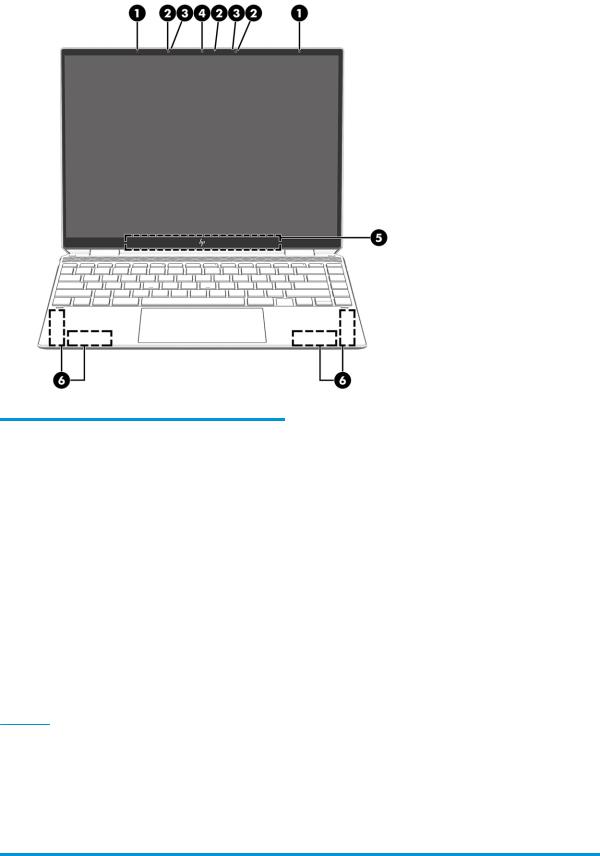
Table 2-3 Display components and their descriptions
Component |
Description |
|
|
|
|
(1) |
Ambient light sensors (2) (select products only) |
Adjusts the brightness of the display, depending on the ambient |
|
|
light. |
|
|
|
(2) |
Camera light(s) |
On: One or more cameras are in use. |
|
|
|
(3) |
Internal microphones |
Record sound. |
|
|
|
(4) |
Camera |
Allows you to video chat, record video, and record still images. To use |
|
|
your camera, see Using the camera on page 20. Some cameras also |
|
|
allow a facial recognition logon to Windows, instead of a password |
|
|
logon. For more information, see Using Windows Hello (select |
|
|
products only) on page 40. |
|
|
NOTE: Camera functions vary depending on the camera hardware |
|
|
and software installed on your product. |
|
|
|
(5) |
WLAN antennas* |
Send and receive wireless signals to communicate with wireless local |
|
|
area networks (WLANs). |
|
|
|
(6) |
WWAN antennas* (select products only) |
Send and receive wireless signals to communicate with wireless wide |
|
|
area networks (WWANs). |
*The antennas are not visible from the outside of the computer. For optimal transmission, keep the areas immediately around the antennas free from obstructions.
For wireless regulatory notices, see the section of the Regulatory, Safety, and Environmental Notices that applies to your country or region.
To access this guide:
▲ Type HP Documentation in the taskbar search box, and then select HP Documentation.
6Chapter 2 Getting to know your computer
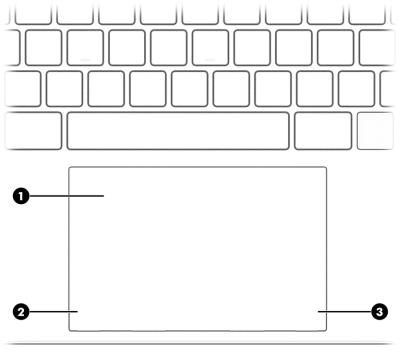
Keyboard area
Keyboards can vary by language.
Touchpad settings and components
Learn the touchpad settings and components
Touchpad settings
Learn how to adjust touchpad settings.
Adjusting touchpad settings
Use these steps to adjust touchpad settings and gestures.
1.Type touchpad settings in the taskbar search box, and then press enter.
2.Choose a setting.
Turning on the touchpad
Follow these steps to turn on the touchpad.
1.Type touchpad settings in the taskbar search box, and then press enter.
2.Using an external mouse, click the touchpad button.
If you are not using an external mouse, press the Tab key repeatedly until the pointer rests on the touchpad button. Then press the spacebar to select the button.
Touchpad components
Identify the touchpad components.
Keyboard area |
7 |
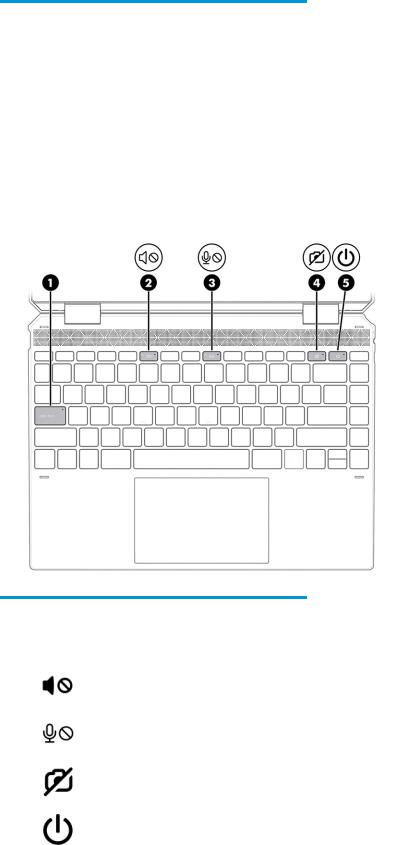
Table 2-4 Touchpad components and their descriptions
Component |
|
Description |
|
|
|
(1) |
Touchpad zone |
Reads your finger gestures to move the pointer or activate items |
|
|
on the screen. |
|
|
NOTE: For more information, see Using touchpad and touch |
|
|
screen gestures on page 24. |
|
|
|
(2) |
Left touchpad button |
Functions like the left button on an external mouse. |
|
|
|
(3) |
Right touchpad button |
Functions like the right button on an external mouse. |
|
|
|
Lights
Identify the lights on the computer.
Table 2-5 Lights and their descriptions
Component |
|
Description |
|
|
|
|
|
(1) |
Caps lock light |
On: Caps lock is on, which switches the key input to all capital |
|
|
|
letters. |
|
|
|
|
|
(2) |
Mute light |
● |
On: Computer sound is off. |
|
|
● |
Off Computer sound is on. |
|
|
|
|
(3) |
Microphone mute light |
● |
On: Microphone is off. |
|
|
● |
Off Microphone is on. |
|
|
|
|
(4) |
Camera privacy light |
● |
On. The camera is off. |
|
|
● |
Off. The camera is on. |
|
|
|
|
(5) |
Power light |
● |
On: The computer is on. |
8Chapter 2 Getting to know your computer
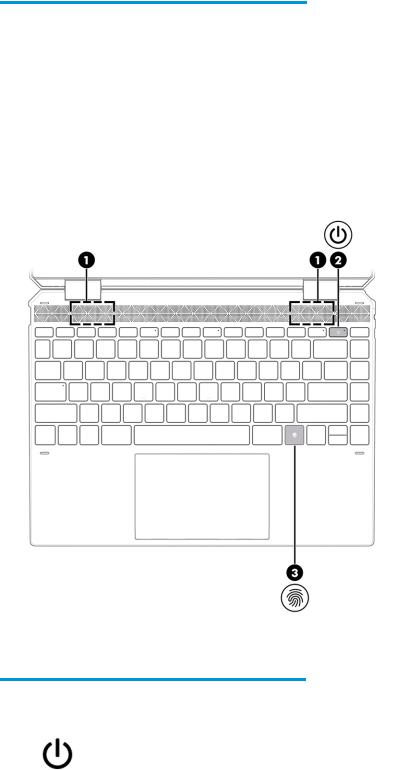
Table 2-5 Lights and their descriptions (continued)
Component |
Description |
|
|
|
|
|
● |
Blinking (select products only): The computer is in the |
|
|
Sleep state, a power-saving state. The computer shuts off |
|
|
power to the display and other unnecessary components. |
|
● |
Off Depending on your computer model, the computer is |
|
|
off, in Hibernation, or in Sleep. Hibernation is the power- |
|
|
saving state that uses the least amount of power. |
|
|
|
Button, speakers, and fingerprint reader
Identify the computer button, speakers and fingerprint reader.
Fingerprint readers, which enable a fingerprint logon, can be located on the touchpad, on a side panel of the computer, or on the top cover below the keyboard.
Table 2-6 Button, speakers, and fingerprint reader and their descriptions
Component |
|
Description |
|
|
|
|
|
|
|
(1) |
Speakers (2) |
Produce sound. |
|
|
|
|
|
|
|
(2) |
Power button |
● |
When the computer is off, press the button brie |
y to turn |
|
|
|
on the computer. |
|
|
|
● |
When the computer is on, press the button brie |
y to |
|
|
|
initiate Sleep. |
|
|
|
● |
When the computer is in the Sleep state, press the button |
|
|
|
|
brie y to exit Sleep (select products only). |
|
Keyboard area |
9 |
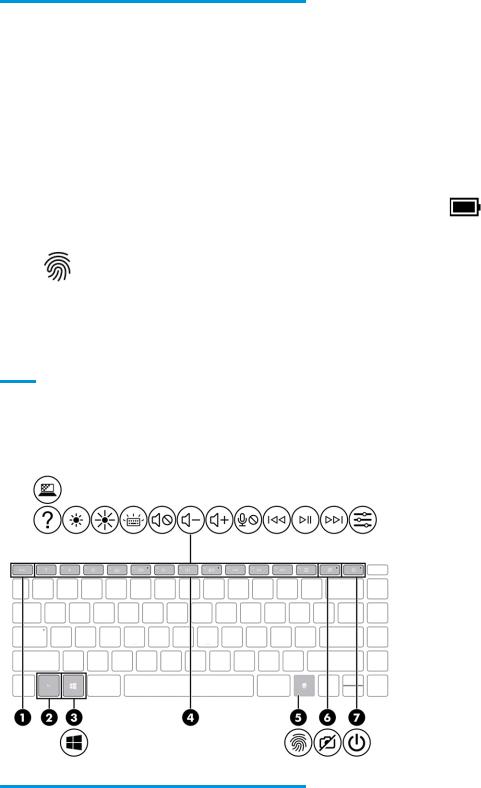
Table 2-6 Button, speakers, and fingerprint reader and their descriptions (continued)
Component |
|
Description |
|
|
|
|
|
|
|
|
|
● |
When the computer is in Hibernation, press the button |
|
|
|
|
brie y to exit Hibernation. |
|
|
|
IMPORTANT: Pressing and holding down the power button |
||
|
|
results in the loss of unsaved information. |
||
|
|
If the computer has stopped responding and shutdown |
||
|
|
procedures are ineffective, press and hold the power button |
||
|
|
down for at least 10 seconds to turn off the computer. |
||
|
|
To learn more about your power settings, see your power |
||
|
|
options: |
|
|
|
|
▲ |
Right-click the Power icon |
, and then select Power |
|
|
|
Options. |
|
|
|
|
||
(3) |
Fingerprint reader |
Allows a fingerprint logon to Windows, instead of a password |
||
|
|
logon. |
|
|
|
|
▲ |
Touch your finger to the fingerprint reader. See Using |
|
|
|
|
Windows Hello (select products only) on page 40 for |
|
|
|
|
details. |
|
IMPORTANT: To prevent fingerprint logon issues, make sure when you register your fingerprint that all sides of your finger are registered by the fingerprint reader.
Special keys
Identify the special keys.
Table 2-7 Special keys and their descriptions
Component |
|
Description |
|
|
|
(1) |
esc key |
Displays system information when pressed in combination with |
|
|
the fn key. |
|
|
|
10 Chapter 2 Getting to know your computer

Table 2-7 Special keys and their descriptions (continued)
Component |
|
Description |
|
|
|
|
|
|
|||
(2) |
fn key |
Executes specific functions when pressed in combination with |
|||
|
|
another key. |
|
|
|
|
|
|
|
|
|
(3) |
Windows key |
Opens the Start menu. |
|
|
|
|
|
NOTE: Pressing the Windows key again will close the Start |
|||
|
|
menu. |
|
|
|
|
|
|
|||
(4) |
Action keys |
Execute frequently used system functions as defined by the icon |
|||
|
|
symbols on f1 through f12 function keys. See Action keys |
|||
|
|
on page 11. |
|
|
|
|
|
|
|||
(5) |
Fingerprint reader |
Allows a fingerprint logon to Windows, instead of a password |
|||
|
|
logon. |
|
|
|
|
|
▲ |
Touch your finger to the fingerprint reader. See Using |
||
|
|
|
Windows Hello (select products only) on page 40 for |
||
|
|
|
details. |
|
|
|
|
|
IMPORTANT: To prevent fingerprint logon issues, make |
||
|
|
|
sure when you register your fingerprint that all sides of |
||
|
|
|
your finger are registered by the fingerprint reader. |
||
|
|
|
|
|
|
(6) |
Camera privacy key |
Turns the camera off and on. |
|
|
|
|
|
NOTE: For more information, see Using the camera |
|
||
|
|
on page 20. |
|
|
|
|
|
|
|
|
|
(7) |
Power button |
● |
When the computer is off, press the button brie |
y to turn |
|
|
|
|
on the computer. |
|
|
|
|
● |
When the computer is on, press the button brie |
y to |
|
|
|
|
initiate Sleep. |
|
|
|
|
● |
When the computer is in the Sleep state, press the button |
||
|
|
|
brie y to exit Sleep (select products only). |
|
|
|
|
● |
When the computer is in Hibernation, press the button |
||
|
|
|
brie y to exit Hibernation. |
|
|
|
|
IMPORTANT: Pressing and holding down the power button |
|||
|
|
results in the loss of unsaved information. |
|
||
|
|
If the computer has stopped responding and shutdown |
|||
|
|
procedures are ineffective, press and hold the power button |
|||
|
|
down for at least 10 seconds to turn off the computer. |
|||
|
|
To learn more about your power settings, see your power |
|||
|
|
options: |
|
|
|
|
|
▲ |
Right-click the Power icon |
, and then select Power |
|
|
|
|
Options. |
|
|
|
|
|
|
|
|
Action keys
Identify the action keys.
The action keys execute frequently used system functions as defined by the icon symbols on f1 through f12. The Action keys vary by computer.
▲To use an action key, press and hold the key.
Keyboard area 11
